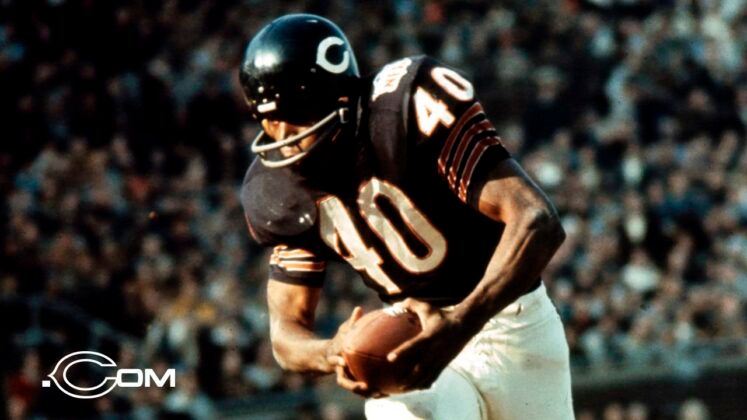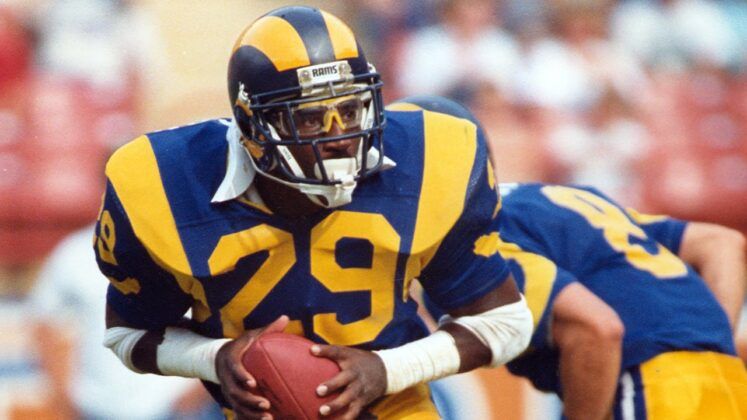1 of 10

Sayers earned first-team All-Pro honors in each of his first five seasons in the league. During that stretch (1965-69), he posted 300+ more yards from scrimmage than any other NFL player and scored the second-most touchdowns (56).
A member of the NFL's 1960s All-Decade Team, Sayers was also selected for the NFL's 75th Anniversary All-Time Team. He was the only player on the 75th Anniversary Team to land a slot at multiple positions (halfback and kick returner).

Campbell led the NFL in rushing yards and won Offensive Player of the Year in each of his first three pro seasons. He claimed the MVP after rushing for 1,697 yards and a league-leading 19 TDs in 1979. In 1980, Campbell became the first and only player to run for 200+ yards in four games in a single season en route to a 1,934-yard campaign.

In 1984, Dickerson rushed for an NFL record 2,105 yards, a mark that hasn’t been touched in the 40+ years since. He earned first-team All-Pro honors in seven of his first eight seasons, grabbed Offensive Rookie of the Year in 1983, and won Offensive Player of the Year in 1986.
Dickerson twice finished second in MVP voting, losing to Washington QB Joe Theismann in 1983 and New York Giants pass rusher Lawrence Taylor in 1986. He was also the quickest running back to reach 10,000 rushing yards, doing so in 91 games.

Tomlinson, a three-time first-team All-Pro and five-time Pro Bowler, scored the third-most TDs in NFL history (162) and ranks seventh in career rushing yards (13,684).
His most dominant campaign came in 2006 when Tomlinson won the league MVP award after scoring an NFL record 31 touchdowns (28 rushing, three receiving).
His consistency was his trademark. Tomlinson holds the NFL record for most consecutive seasons with 10+ rushing touchdowns (nine), 15+ rushing touchdowns (six), and 1,200+ rushing yards (seven).

Peterson hit the ground running with the Minnesota Vikings in 2007. Not only did he win Offensive Rookie of the Year, but he set an NFL single-game record by rushing for 296 yards against the San Diego Chargers. Peterson surpassed 1,200 rushing yards in seven seasons, leading the NFL in rushing three times (including in his age-30 campaign).

Over 12 seasons with the Rams and Indianapolis Colts, Faulk became the only player in NFL history to post 12,000 rushing yards and 6,000 receiving yards. He caught more passes (767) than any other RB and ranks 41st in league history in receptions among all pass catchers.
Faulk is one of just three players to register 1,000 rushing yards and 1,000 receiving yards in the same season. He accomplished that feat in 1999, winning the first of three straight Offensive Player of the Year awards. In 2000, Faulk took home MVP honors after putting up a league-leading 26 total touchdowns for The Greatest Show on Turf.

Given how running backs have been devalued in today's game, Smith will probably never face a realistic challenge to his record. Frank Gore wrapped up a 16-year career in 2020 and was still 2,000+ yards behind Smith. The only active RBs among the NFL's top 40 rushers -- Derrick Henry and Ezekiel Elliott -- each trail Smith by 8,500+ yards.
The definition of consistency, Smith eclipsed 1,000 rushing yards each season from his age-22 through age-32 campaigns (and only narrowly missed that mark in his age-21 and age-33 seasons). His 175 career touchdowns are second only to Jerry Rice's 208.

Sanders hung up his cleats after his age-30 campaign, citing frustration with the Detroit Lions' lack of results.
Sanders rushed for at least 1,100 yards in all 10 seasons of his career, leading the NFL in rushing four times. He seemingly got better as he aged.
In 1997, Sanders set career highs in rushing yards (2,053) and yards from scrimmage (2,358) while winning MVP and Offensive Player of the Year. He earned Pro Bowl honors in all 10 NFL seasons and was named a first or second-team All-Pro every year (first-team six times).

"Sweetness" was always available and always productive. Payton played in 198 out of a possible 199 career games and posted at least 100 rushing yards in 77 of those contests.
A five-time first-team All-Pro and nine-time Pro Bowler, Payton won the 1977 MVP award and earned a Super Bowl trophy after the 1985 campaign. One of the greatest NFL players of all time, Payton was arguably a better person, and the league’s Man of the Year Award is named in his honor.

Brown led the league in rushing in eight of his nine pro seasons and touchdowns in five of those campaigns. He earned three MVP trophies, eight first-team All-Pro nods, and nine Pro Bowl trips, exuding a level of dominance rarely seen in professional sports.
Brown remains the only player in league history to average more than 100 rushing yards per game. He retired in 1965 as the NFL leader in most rushing categories and is still sixth all-time in rushing touchdowns (106) and 11th in rushing yards (12,312).
Of course, Brown achieved these totals while playing in an era where defenses sold out to stop the run. Plus, the NFL played only 12 games per season over the first four years of Brown's career before shifting to a 14-game slate in 1961, meaning he didn't get as many appearances to rack up statistics.
Adjusting for his era, Brown is the best running back in NFL history and one of the top players ever to set foot on the field.
